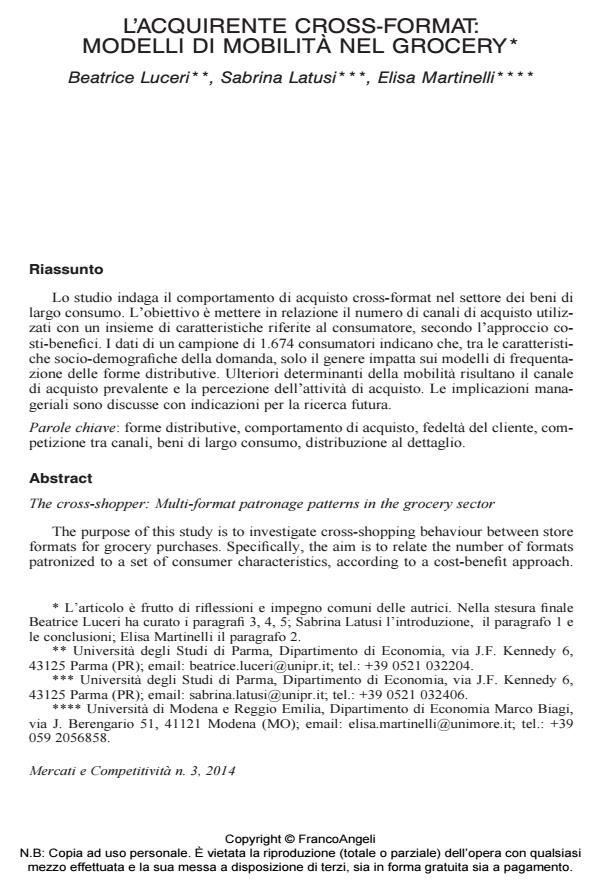The cross-shopper: Multi-format patronage patterns in the grocery sector
Journal title MERCATI E COMPETITIVITÀ
Author/s Beatrice Luceri, Sabrina Latusi, Elisa Martinelli
Publishing Year 2014 Issue 2014/3
Language Italian Pages 21 P. 19-39 File size 115 KB
DOI 10.3280/MC2014-003003
DOI is like a bar code for intellectual property: to have more infomation
click here
Below, you can see the article first page
If you want to buy this article in PDF format, you can do it, following the instructions to buy download credits

FrancoAngeli is member of Publishers International Linking Association, Inc (PILA), a not-for-profit association which run the CrossRef service enabling links to and from online scholarly content.
The purpose of this study is to investigate cross-shopping behaviour between store formats for grocery purchases. Specifically, the aim is to relate the number of formats patronized to a set of consumer characteristics, according to a cost-benefit approach. Data from a sample of 1,674 shoppers indicate that, among consumers’ socio-demographic characteristics, only the gender impact on multi-format patronage patterns. Moreover, consumers’ shopping perception and consumers’ store format preference proved to be important determinants of patronage set size. Implications for retailers are discussed with suggestions for future research. Keywords: store formats, shopping behaviour, customer loyalty, inter-format competition, grocery, retailing.
Keywords: Forme distributive, comportamento di acquisto, fedeltà del cliente, competizione tra canali, beni di largo consumo, distribuzione al dettaglio.
Beatrice Luceri, Sabrina Latusi, Elisa Martinelli, L’acquirente cross-format: modelli di mobilità nel rocery in "MERCATI E COMPETITIVITÀ" 3/2014, pp 19-39, DOI: 10.3280/MC2014-003003